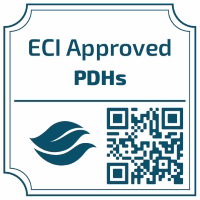Back
Claim Credit Verification Code: 2035
One (1) Hour Workshop
Stormwater Management
The Power of Polyacrylamide
Friday, February 28, 2025
9:40 AM – 10:40 AM ET
Location: E10C
CE: 1 PDH
Level of Presentation: Intermediate

Eddie Snell, BS Environmental Science, CISEC
Technical Specialist/Training Manager
Applied Polymer Systems
Woodstock, Georgia, United States
Presenter(s)
Flocculants are common and beneficial tools used in our industry. Polyacrylamides, in the anionic form, are the most used flocculants due to their safety to aquatic organisms and their effectiveness. ‘The Power of Polyacrylamides’ follows the descriptive narrative of its title. It is a workshop that discusses this powerful tool, it’s long use history over the course of a century, the reasons behind regulatory selection and acceptance, and the lengthy list of benefits surrounding this technology. Join me in a workshop that dials us back to the origins of flocculant chemical treatment and why polyacrylamide has carried this torch for a century!
Full Abstract: Flocculants are powerful tools that have been used globally for almost a century. Although there are many different types of flocculants available, wide acceptance and use is due to the versatility and effectiveness of anionic polyacrylamide (PAM) and PAM enhanced BMPs and technologies. PAM has been used in agriculture since the 1950s, mining and water treatment since the 1970s, and in the 1990s was introduced to the erosion control and stormwater treatment industries. Anionic PAMs (aPAM) have proven highly effective in soil stabilization and water treatment applications, while being safe for the environment and aquatic organisms. aPAM flocculant applications can reduce and remove contaminants such as suspended solids, metals, and excess nutrient loading that contributes to poor water quality and makes it difficult to stay in compliance and meet discharge limits. Discharge limits are becoming increasingly stringent as the negative effects of pollution into our waterways become more and more apparent. Traditional and conventional BMPs often cannot reach low numeric discharge limits alone. The addition of aPAM applications allows for the reduction of 95+ percent of turbidity from discharge waters. Applications that we see aPAM flocculants used in include soil stabilization, soil amendments, BMP enhancement, dust control, dewatering and other water clarification applications involving both concentrated and sheet flows. This presentation will introduce flocculant treatments, identify the selection of aPAM as a highly safe and effective flocculant, discuss the history of aPAM and aPAM technologies, as well as discuss and illustrate the most effective applications and how they are set up effectively in the field.
Full Abstract: Flocculants are powerful tools that have been used globally for almost a century. Although there are many different types of flocculants available, wide acceptance and use is due to the versatility and effectiveness of anionic polyacrylamide (PAM) and PAM enhanced BMPs and technologies. PAM has been used in agriculture since the 1950s, mining and water treatment since the 1970s, and in the 1990s was introduced to the erosion control and stormwater treatment industries. Anionic PAMs (aPAM) have proven highly effective in soil stabilization and water treatment applications, while being safe for the environment and aquatic organisms. aPAM flocculant applications can reduce and remove contaminants such as suspended solids, metals, and excess nutrient loading that contributes to poor water quality and makes it difficult to stay in compliance and meet discharge limits. Discharge limits are becoming increasingly stringent as the negative effects of pollution into our waterways become more and more apparent. Traditional and conventional BMPs often cannot reach low numeric discharge limits alone. The addition of aPAM applications allows for the reduction of 95+ percent of turbidity from discharge waters. Applications that we see aPAM flocculants used in include soil stabilization, soil amendments, BMP enhancement, dust control, dewatering and other water clarification applications involving both concentrated and sheet flows. This presentation will introduce flocculant treatments, identify the selection of aPAM as a highly safe and effective flocculant, discuss the history of aPAM and aPAM technologies, as well as discuss and illustrate the most effective applications and how they are set up effectively in the field.
Learning Objectives:
At the conclusion of this presentation, attendees will:
- Expand their knowledge of anionic polyacrylamide technologies and discuss how aPAM flocculants have evolved over the course of a century in erosion and sediment control and water treatment
- Identify anionic polyacrylamide as a highly safe and effective flocculant used to meet numeric discharge limits
- Implement the correct aPAM treatment system for field applications on site

.jpg)


